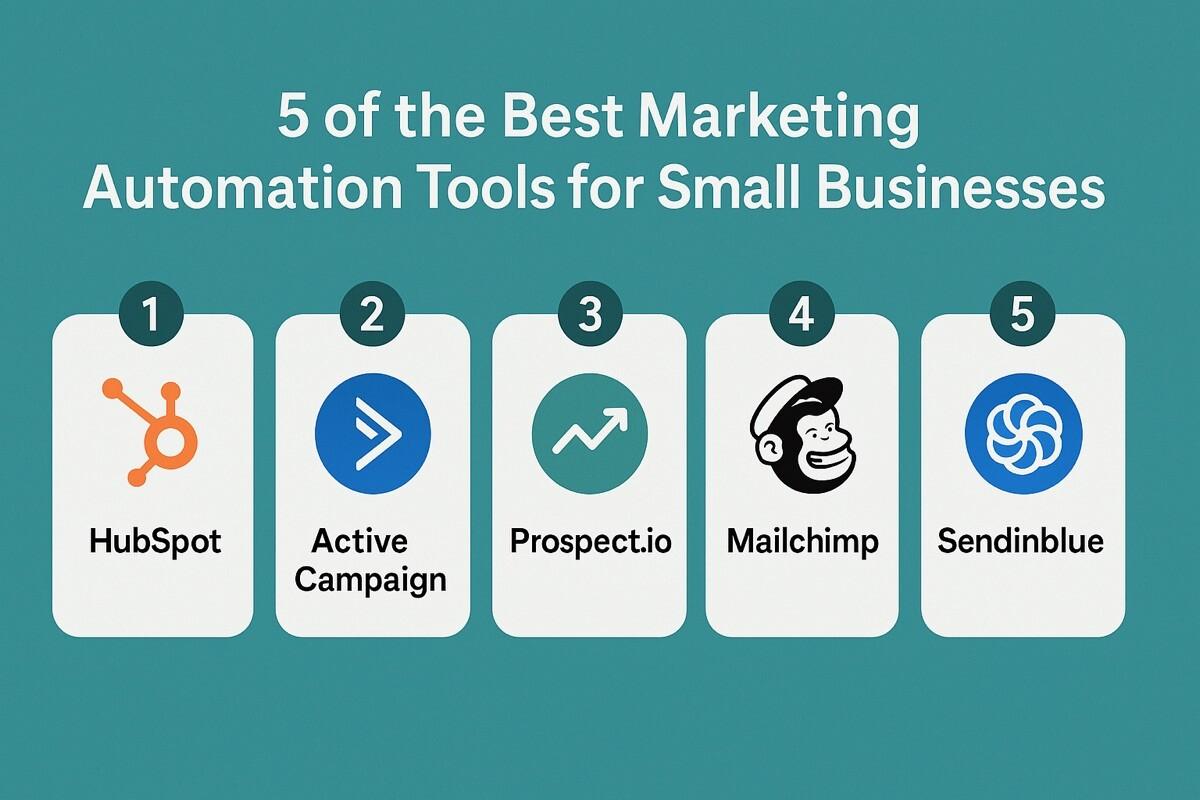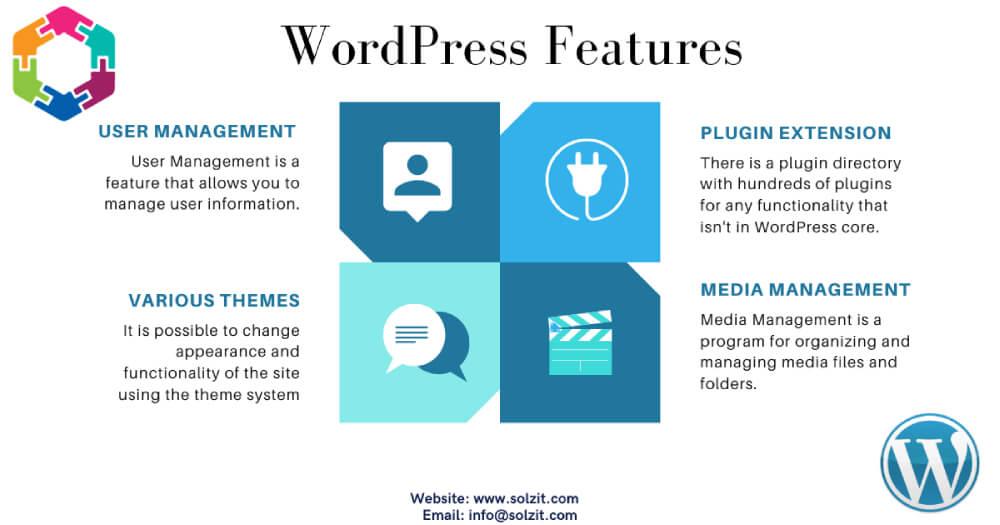Creating a business website that drives results isn’t just about aesthetics—it’s about crafting a digital experience that resonates with your audience. Focus on clear messaging, intuitive design, and compelling calls-to-action to transform visitors into loyal customers. Your success starts online!
How to Build a Business Website That Drives Results
In today’s digital landscape, having a robust online presence is not just an option; it’s a necessity. Your website is often the first impression potential customers will have of your business, acting as both a storefront and a powerful marketing tool. But merely having a website isn’t enough. To truly drive results, you need a site that captivates visitors, fosters engagement, and converts clicks into loyal customers.
Imagine a platform that not only showcases your products and services but also tells your unique story, builds trust, and inspires action. This is not a distant dream; it is entirely achievable with the right strategies and mindset. In this article, we will guide you through the essential steps to create a business website that not only looks great but also performs exceptionally well. Whether you’re starting from scratch or looking to revamp your existing site, prepare to unlock the potential of your online presence and watch your business thrive like never before. Let’s transform your vision into a compelling reality that drives tangible results!
Understanding the Importance of a Results-Driven Website
In today’s digital landscape, having a website is not enough; it must be a results-driven platform that aligns with your business goals. A website that focuses solely on aesthetics without considering functionality and user experience can lead to missed opportunities. Understanding the importance of a results-driven approach is crucial for enhancing engagement, driving conversions, and ultimately achieving growth.
A results-driven website is designed with a clear focus on user intent. It anticipates the needs of visitors and provides them with immediate solutions. By prioritizing user experience (UX), you can help guide visitors through their journey, ensuring they find what they are looking for quickly and efficiently. This includes:
- Intuitive Navigation: Make it easy for users to find information.
- Mobile Responsiveness: Ensure your site looks great on all devices.
- Fast Load Times: Reduce bounce rates by optimizing site speed.
Moreover, the content on your site must be compelling and relevant. High-quality content informs, engages, and influences visitors, encouraging them to take action. This can be achieved through:
- Valuable Blog Posts: Share insights and expertise to establish authority.
- Engaging Visuals: Use images and videos to enhance storytelling.
- Clear Calls to Action: Guide visitors towards desired actions, such as signing up or making a purchase.
Another critical aspect of a results-driven website is analytics and performance tracking. By utilizing tools like Google Analytics, you can gather insights into user behavior, traffic sources, and conversion rates. This data allows you to:
| Metric | Importance |
|---|---|
| Traffic Sources | Identifies where visitors are coming from. |
| Bounce Rate | Indicates how well your site retains visitors. |
| Conversion Rate | Measures the effectiveness of your calls to action. |
By analyzing these metrics, you can continually refine and optimize your website. Small adjustments can lead to significant improvements over time, reinforcing the notion that a results-driven website is not a one-time project but an ongoing process of enhancement and adaptation.
Ultimately, a results-driven website acts as a powerful tool that not only reflects your brand’s identity but also drives meaningful interactions with your audience. Embracing this mindset will set the foundation for your business’s success in the digital realm.
Defining Your Website Objectives for Maximum Impact
To create a website that truly drives results, you must first pinpoint the objectives that will guide your design and content strategy. Setting clear goals not only provides direction but also ensures that every element of your site works cohesively towards achieving those targets. Here are some essential objectives to consider:
- Increase Brand Awareness: Your website should serve as a digital storefront, introducing your brand to visitors and establishing credibility.
- Generate Leads: Create compelling calls-to-action that encourage visitors to provide their information or take significant steps towards becoming customers.
- Drive Sales: If your goal is to sell products or services, ensure that your website facilitates a smooth and secure purchasing process.
- Enhance Customer Engagement: Foster a connection with your audience through engaging content, social media integration, and interactive features.
- Educate Your Audience: Provide valuable resources, such as blogs, guides, or FAQs, to help visitors understand your offerings better.
Once you’ve identified these objectives, it’s essential to align them with measurable outcomes. Consider using a SMART framework – ensuring your goals are Specific, Measurable, Achievable, Relevant, and Time-bound. For instance, instead of simply stating that you want to increase traffic, consider setting a goal to boost your website visits by 20% over the next three months.
To visualize your objectives and track your progress, you can create a simple table like this:
| Objective | Measurement | Timeline |
|---|---|---|
| Increase Brand Awareness | Website visits | 3 months |
| Generate Leads | New sign-ups | 2 months |
| Drive Sales | Transactions | 6 months |
| Enhance Customer Engagement | Social media shares | 1 month |
Your website’s objectives will guide not only the content you create but also the user experience you design. Each page should work towards fulfilling these goals, from the homepage to landing pages. By regularly assessing your progress against these objectives, you can make informed adjustments that will enhance your site’s performance over time.
Ultimately, defining your website objectives is not a one-time task; it’s an ongoing process that requires regular review and adaptation. Keep your goals at the forefront of your mind as you develop new content and features, ensuring that every decision you make aligns with your overarching vision for success.

Crafting a Compelling Brand Story to Engage Your Audience
In today’s digital landscape, your brand’s story isn’t just a background narrative—it’s the lifeblood of your business website. A compelling brand story resonates deeply with your audience, fostering an emotional connection that can drive engagement and loyalty. When you weave your story into the fabric of your website, you transform mere visitors into passionate advocates.
To craft a persuasive brand story, consider the following elements:
- Authenticity: Share your journey with honesty, from the challenges you’ve faced to the triumphs you’ve achieved. Authenticity builds trust.
- Relatability: Speak directly to your audience’s pain points and desires. Your story should reflect their experiences, making them feel seen and understood.
- Vision: Communicate what your brand stands for. Share your mission and how it impacts the world around you, inspiring your audience to join your cause.
- Engagement: Invite your audience into the conversation. Use storytelling techniques that encourage interaction, such as questions or calls to action that reflect their input.
Visual elements play a critical role in storytelling. Integrate images, videos, and infographics that complement your narrative. This multi-sensory approach not only captivates your audience but also reinforces key messages. Consider using a gallery or slider to showcase milestones in your brand’s history, allowing visitors to visually connect with your evolution.
| Key Storytelling Element | Example |
|---|---|
| Origin | How your brand was founded from a simple idea. |
| Values | Commitment to sustainability and ethical practices. |
| Community Impact | Partnerships with local charities and initiatives. |
As you develop your website, remember that storytelling is not just about what you say, but also how you say it. Employ a consistent tone and voice that reflects your brand’s personality. Whether it’s warm and approachable or bold and adventurous, consistency will help reinforce your identity and make your content memorable.
don’t underestimate the power of feedback. Encourage your audience to share their experiences with your brand. Use testimonials and case studies to illustrate how your story has impacted their lives. This not only enriches your narrative but also creates a community around your brand, driving results and fostering lasting relationships.
Choosing the Right Platform to Launch Your Vision
When it comes to launching your business vision online, selecting the right platform is crucial. The platform you choose will not only affect your website’s functionality but also shape the user experience and influence your overall branding. With countless options available, it’s essential to carefully evaluate your needs before making a decision.
First, consider the type of content you plan to showcase. If your business relies heavily on visuals, platforms like WordPress or Squarespace could be ideal due to their sleek designs and media management capabilities. On the other hand, if your focus is on e-commerce, platforms such as Shopify or WooCommerce will provide tailored solutions to manage your inventory and sales effectively.
Next, assess the level of customization that you require. If your vision involves a unique design or complex functionality, you might lean towards more flexible platforms like WordPress, which offers a plethora of plugins and themes. Alternatively, if you prefer a straightforward setup with less technical overhead, website builders like Wix or Weebly can help you create a professional-looking site without needing coding skills.
Don’t forget to factor in your budget. Some platforms offer free basic plans but can become costly as you add premium features. To help you compare options, take a look at the following table:
| Platform | Starting Price | Best For |
|---|---|---|
| WordPress | Free / $4/month | Customization |
| Shopify | $29/month | E-commerce |
| Squarespace | $16/month | Visual Design |
| Wix | $14/month | Ease of Use |
consider the support and resources available with the platform. A robust support system can be invaluable, especially for those new to web development. Look for platforms that offer extensive documentation, user communities, and customer support options. This can save you time and stress in the long run, allowing you to focus on what truly matters—bringing your vision to life.
Choosing the right platform can feel overwhelming, but by identifying your goals and priorities, you can find a solution that aligns with your vision. Remember, the right platform not only enhances your website’s functionality but also communicates the essence of your brand to your audience effectively.

Designing User-Friendly Navigation for Enhanced Experience
Creating a seamless navigation experience is essential for any business website aiming to attract and retain visitors. The way users interact with your site can significantly influence their perception and engagement. A user-friendly navigation system not only enhances usability but also leads to higher conversion rates.
Start with a Clear Structure: Organize your content logically. Your main navigation should include only the most important sections of your site, such as:
- Home
- About Us
- Products/Services
- Blog
- Contact
This structured approach allows visitors to find what they need without feeling overwhelmed. Each link should lead to a clearly defined section, which can further connect to subcategories or pages.
Utilize Descriptive Labels: Ensure that your navigation labels are intuitive. Rather than using vague terms, opt for descriptive labels that let users know exactly what to expect. For example, instead of “Products,” consider “Our Products” or “Shop Now.” These small changes can make navigation clearer and more inviting.
Implement Responsive Design: With a growing number of users accessing websites via mobile devices, it’s crucial that your navigation adapts seamlessly to different screen sizes. A responsive design will ensure that menus are easy to use regardless of the device, keeping frustration at bay and encouraging users to explore more of your site.
Incorporate Search Functionality: A robust search feature can be a game-changer for user experience. If visitors can’t find what they are looking for within a few clicks, they may abandon your site. Consider placing a search bar prominently on your header. This empowers users to find specific content quickly, further enhancing their experience.
| Feature | Benefit |
|---|---|
| Clear Structure | Helps users find information quickly |
| Descriptive Labels | Reduces confusion and improves clarity |
| Responsive Design | Ensures accessibility across devices |
| Search Functionality | Allows users to locate specific content easily |
conducting regular usability testing is vital. Gather feedback from real users to identify pain points in your navigation system. Tools like heatmaps and user session recordings can provide insights into how users interact with your site, revealing areas for improvement. By continuously refining your navigation, you’ll create an inviting space that encourages users to linger and explore.

Optimizing for Mobile Users to Capture Every Opportunity
In today’s digital landscape, a significant portion of web traffic comes from mobile devices. If your website is not optimized for mobile users, you risk losing potential customers. To ensure that your site captures every opportunity, it’s essential to create a seamless mobile experience. Here are some key strategies to consider:
- Responsive Design: Implement a responsive design that adapts to various screen sizes. This ensures that users have an enjoyable browsing experience, regardless of the device they are using.
- Fast Loading Times: Optimize images and minimize code to enhance loading speeds. Mobile users are often on the go, and a slow website can lead to increased bounce rates.
- Simple Navigation: Create a straightforward navigation menu that is easy to use on smaller screens. Limit the number of menu items and utilize drop-down menus to keep it clutter-free.
- Touch-Friendly Elements: Ensure that buttons and links are large enough to be easily tapped with a finger. This reduces frustration and encourages engagement.
Another crucial aspect of mobile optimization is content. Your website should offer concise and relevant information that is easy to read on smaller displays. Consider the following:
- Prioritize Key Content: Highlight essential information at the top of the page, ensuring that it’s the first thing mobile users see.
- Use Clear Typography: Select fonts that are legible on mobile devices. Opt for larger text sizes and ample line spacing to improve readability.
- Engaging Visuals: Use images and videos strategically to capture attention while ensuring they don’t slow down the loading time.
Furthermore, it’s vital to leverage mobile-specific features to enhance user experience:
- Location Services: Incorporate geolocation features to provide personalized content or services based on user location.
- Click-to-Call Buttons: Make it easy for users to contact you with a one-tap call button, streamlining the customer journey.
- Mobile Forms: Simplify forms for mobile users by reducing the number of fields and utilizing autofill options to increase conversions.
Lastly, continuously monitor your website’s performance using analytics tools. Focus on metrics such as mobile traffic, bounce rates, and conversion rates to make informed decisions and adjustments. Regularly testing your site on various devices ensures that you maintain an optimal mobile experience.
| Element | Mobile Optimization Strategy |
|---|---|
| Design | Responsive Layout |
| Speed | Image Compression |
| Navigation | Simple Menu |
| Content | Concise & Relevant |
| Interaction | Touch-Friendly Buttons |

Creating High-Quality Content That Resonates and Converts
Creating content that not only captures attention but also converts visitors into customers is an art form. To achieve this, it’s essential to understand your audience deeply. Research their needs, preferences, and pain points. Utilize tools like Google Analytics and social media insights to gather data that will shape your content strategy. By knowing who you’re talking to, you can tailor your messaging to speak directly to their desires and concerns.
Next, focus on delivering value. High-quality content informs, entertains, or solves problems. Whether you’re crafting blog posts, infographics, or videos, ensure they are actionable and relevant. This can be achieved by:
- Incorporating stories: Personal anecdotes or customer testimonials add authenticity.
- Using visuals: Eye-catching images or graphics can enhance understanding and retention.
- Creating lists and guides: People love easily digestible formats that summarize key information.
Moreover, optimizing your content for search engines is crucial. Craft compelling headlines and subheadings that not only draw readers in but also include relevant keywords. This improves your site’s visibility and drives organic traffic. Don’t forget to include internal links to guide visitors to related content, boosting their engagement and time spent on your site.
Another vital aspect is encouraging interaction. End your posts with open-ended questions or calls-to-action (CTAs) that prompt readers to comment or share their thoughts. This engagement not only builds community but also signals to search engines that your content is valuable.
consider tracking your content’s performance. Use metrics like bounce rates, time on page, and conversion rates to gauge effectiveness. This data will inform future content strategies, enabling continuous improvement and adaptation to your audience’s evolving needs.
| Content Type | Benefits | Best Used For |
|---|---|---|
| Blog Posts | Informative, SEO-friendly | Thought leadership, driving traffic |
| Videos | Engaging, high retention | Demonstrations, tutorials |
| Infographics | Visual appeal, shareable | Data presentation, social media |

Implementing SEO Strategies for Greater Online Visibility
To ensure your business website stands out in the crowded digital landscape, it’s crucial to implement effective SEO strategies that enhance your online visibility. With the right approach, you can attract a steady stream of organic traffic, ultimately leading to greater engagement and conversion rates. Here are some powerful techniques that will position your site for success:
- Keyword Research: Identifying the right keywords is foundational. Utilize tools like Google Keyword Planner or SEMrush to discover high-traffic, low-competition keywords that align with your business offerings.
- On-Page Optimization: Ensure that your target keywords are seamlessly integrated into key areas such as titles, meta descriptions, headers, and throughout the body content. This signals to search engines the relevance of your pages.
- Quality Content Creation: Regularly publish high-quality, valuable content that addresses the needs and questions of your target audience. Blog posts, guides, and tutorials not only improve SEO but also establish your authority in your niche.
- Mobile Optimization: With more users accessing the web via mobile devices, a responsive design is critical. Google favors mobile-friendly sites, which means optimizing for speed and usability can significantly boost your rankings.
- Link Building: Cultivate high-quality backlinks from reputable sites within your industry. This not only drives referral traffic but also enhances your site’s authority in the eyes of search engines.
In addition to these strategies, consider the following technical aspects to further enhance your SEO performance:
| Technical SEO Element | Description | Importance |
|---|---|---|
| Site Speed | Optimizing your site’s loading time | Essential for user experience and ranking |
| XML Sitemap | A structured map of your site for search engines | Helps search engines crawl your site efficiently |
| SSL Certificate | Implementing HTTPS for security | Boosts trust and can improve rankings |
| Alt Text for Images | Descriptive text for images | Improves accessibility and helps with image searches |
Remember, SEO is not a one-time effort but an ongoing process. Regularly track your performance using tools like Google Analytics and Search Console to understand your traffic sources and user behavior. This data will allow you to refine your strategies, ensuring you remain competitive in your market.
By committing to these SEO strategies, you not only increase your website’s visibility but also create a robust online presence that resonates with your audience. This commitment to excellence in digital marketing can transform your business, driving results that matter.
Leveraging Social Proof to Build Trust and Credibility
In today’s digital landscape, establishing trust and credibility is crucial for any business website. One of the most effective ways to achieve this is by leveraging social proof, which can significantly influence potential customers’ decisions. When visitors see that other people value your products or services, they are more likely to trust your brand and take action.
Consider incorporating the following elements of social proof into your website:
- Customer Testimonials: Display authentic testimonials from satisfied customers. These personal stories can resonate with potential buyers and make them feel more confident in choosing your offerings.
- Ratings and Reviews: Showcase product ratings and reviews prominently. High ratings can serve as a powerful motivator, pushing undecided visitors to make a purchase.
- Case Studies: Highlight in-depth case studies that detail how your product or service has solved real challenges for your clients. This not only demonstrates your expertise but also shows measurable success.
- Social Media Mentions: If your brand has been mentioned by popular influencers or has gained traction on social media, display these endorsements. This can validate your brand’s reputation and attract new customers.
Additionally, you can utilize visual elements to enhance the impact of social proof. For example, incorporate a section on your homepage or landing pages that features:
| Social Proof Element | Purpose |
|---|---|
| Star Ratings | Quick visual recognition of product quality |
| Client Logos | Association with reputable brands builds credibility |
| Follower Count | Demonstrates popularity and trustworthiness |
| Media Mentions | Endorsement from credible sources enhances authority |
Another powerful strategy is to create a sense of urgency by showcasing limited-time offers or popular items that are in high demand. Phrases like “Only 3 left in stock!” or “Join 1,000+ satisfied customers!” can instill a fear of missing out, encouraging immediate action from visitors.
remember to keep all social proof elements up-to-date and relevant. Regularly refreshing testimonials, reviews, and case studies can demonstrate your ongoing commitment to customer satisfaction and improvement. This not only builds trust but also cultivates a loyal customer base that is more likely to return and advocate for your brand.

Incorporating Effective Calls to Action for Every Page
Every page of your website holds the potential to convert visitors into customers, and the key to unlocking this potential lies in your calls to action (CTAs). Crafting effective CTAs requires more than just catchy phrases; it involves a deep understanding of your audience, their needs, and the specific actions you want them to take. By strategically placing well-designed CTAs throughout your site, you can guide users seamlessly along their journey from awareness to decision-making.
To ensure your CTAs resonate, consider the following strategies:
- Use Clear, Action-Oriented Language: Words like “Get Started,” “Download Now,” or “Join Today” create a sense of urgency and clarity. Make it unmistakable what action you want your visitors to take.
- Employ Contrasting Colors: Your CTA buttons should stand out visually. Utilize colors that contrast with your website’s overall palette to draw attention without being jarring.
- Position Strategically: Place CTAs at critical points throughout your pages. For instance, after a compelling blog post or customer testimonial, position a CTA to encourage readers to take the next step.
- Limit Choices: Too many options can overwhelm users. Focus on one primary action per page to streamline decision-making and improve conversion rates.
Moreover, implement A/B testing to refine your CTAs continually. Experiment with different phrases, designs, and placements to see what resonates best with your audience. This iterative approach not only enhances user experience but also optimizes conversion rates over time.
Consider utilizing a CTA Matrix to organize and strategize your calls to action across different pages. Here’s a simple example:
| Page Type | CTA Example | Purpose |
|---|---|---|
| Home | Learn More | Introduce services/products |
| Blog | Subscribe Now | Build email list |
| Product Page | Add to Cart | Encourage purchases |
| Contact Us | Request a Quote | Generate leads |
By aligning your CTAs with your overall business goals and the page content, you ensure that each is purposeful and effective. Remember, a compelling CTA not only drives immediate action but also fosters a deeper connection with your audience, encouraging them to engage with your brand over the long term.

Utilizing Analytics to Measure Performance and Adapt
In today’s digital landscape, the ability to analyze and interpret data is essential for any business seeking to enhance its online presence. By leveraging analytics, you can gain invaluable insights into how visitors interact with your website, allowing for informed decisions that can significantly boost your performance.
Start by implementing tools like Google Analytics or other advanced analytics platforms to track key metrics. Focus on:
- User Engagement: Monitor how long visitors stay on your pages and what content they find engaging.
- Conversion Rates: Identify how many visitors complete desired actions, such as signing up for newsletters or making purchases.
- Traffic Sources: Determine where your visitors are coming from—be it organic search, social media, or paid ads.
With this data at your fingertips, the next step is to analyze user behavior. Are there specific pages where users tend to drop off? Are your call-to-action buttons effective? By identifying these patterns, you can make targeted adjustments to your website. Consider running A/B tests to experiment with different designs or messaging, enabling you to refine your approach based on real-world results.
It’s also crucial to set measurable goals that align with your overall business objectives. Use your analytics to establish performance benchmarks. For example, if your goal is to increase your email subscriber list by 20% in the next quarter, track your progress against this target. This not only keeps your team accountable but also highlights what’s working and what needs improvement.
As the digital marketplace evolves, so should your strategies. Regularly reviewing your analytics ensures that you remain agile, adapting to trends and changes in consumer behavior. This proactive approach can differentiate your business from competitors who may not be as data-driven.
| Metric | Current Value | Target Value |
|---|---|---|
| User Engagement (Avg. Time on Page) | 2:30 min | 3:00 min |
| Conversion Rate | 4% | 6% |
| Monthly Unique Visitors | 1,000 | 1,500 |
utilizing analytics is not just about collecting data; it’s about making that data work for you. By continuously measuring performance and adapting your strategies accordingly, you can create a dynamic, results-driven website that not only meets but exceeds your business goals.

Enhancing Speed and Security to Boost User Confidence
Building a successful business website goes beyond aesthetics; it is crucial to prioritize speed and security as fundamental elements of user experience. When visitors encounter a fast-loading site, they are more likely to stay, engage, and convert. A slow website can lead to frustration and abandonment, ultimately impacting your bottom line. By enhancing your website’s performance, you can ensure that users feel valued and are more inclined to trust your brand.
To achieve optimal speed, consider implementing the following strategies:
- Optimize Images: Compress images without sacrificing quality to reduce load times.
- Minimize HTTP Requests: Limit the number of elements on your webpage to decrease loading times.
- Leverage Browser Caching: Allow users’ browsers to store certain elements of your site for faster revisit times.
- Utilize a Content Delivery Network (CDN): Distribute your website’s content across various servers globally to reduce distance and loading speeds.
Alongside speed, incorporating robust security measures is essential for fostering user confidence. Consumers are increasingly aware of data privacy and security threats. To mitigate these concerns, implement the following security protocols:
- SSL Certificate: Ensure your website is secured with HTTPS to protect user data during transmission.
- Regular Software Updates: Keep all plugins and themes up to date to prevent vulnerabilities.
- Strong Password Policies: Encourage users to create strong passwords and implement two-factor authentication where possible.
- Firewall Protection: Use a web application firewall to filter and monitor traffic for threats.
Consider the following table to visualize the correlation between website speed, security, and user engagement metrics:
| Website Speed (Seconds) | Security Level | Estimated User Engagement |
|---|---|---|
| Under 2 | High | 85%+ |
| 2-4 | Medium | 60%-80% |
| Over 4 | Low | Below 50% |
By focusing on both speed and security, you create a seamless experience that not only attracts visitors but also encourages them to return. Remember, a fast and secure website isn’t just a technical requirement—it’s a critical investment in your brand’s reputation and future growth. When users feel safe browsing your site, they are more likely to engage with your offerings and recommend your services to others.
Building a Scalable Website for Future Growth
Designing for Scalability
When constructing a website with future growth in mind, it’s crucial to prioritize a flexible and adaptable design. A scalable website can accommodate increasing traffic and new features without compromising performance. Here are some key considerations:
- Responsive Design: Ensure your website is fully responsive, providing an optimal viewing experience across various devices and screen sizes.
- Modular Architecture: Utilize a modular design that allows easy updates and modifications. This includes using reusable components that can be repurposed throughout the site.
- Content Management System (CMS): Choose a robust CMS like WordPress, which offers plugins and themes that can be easily modified as your business evolves.
Optimizing Performance
Website speed and performance are vital for user experience and search engine ranking. To ensure your site is scalable, implement the following strategies:
- CDN Integration: Use a Content Delivery Network (CDN) to distribute your content globally, reducing load times and server strain.
- Image Optimization: Compress images and utilize next-gen formats to enhance loading speed while maintaining quality.
- Efficient Coding Practices: Write clean, efficient code and minimize HTTP requests to streamline your website’s performance.
Future-Proofing Your Technology Stack
Choosing the right technology stack is essential for scalability. Look for platforms and languages that are widely supported and continually updated. Consider the following:
| Technology | Benefits |
|---|---|
| WordPress | Easy to use, extensive plugin ecosystem, SEO-friendly. |
| React | Component-based architecture, fast user interfaces, strong community support. |
| Node.js | High performance for data-intensive applications, scalable networking applications. |
Planning for Future Features
As your business grows, your website will require new functionalities. It’s important to plan ahead by considering upcoming features that can enhance user engagement and drive conversions:
- Integrating E-commerce: If you’re considering selling products online, ensure your site can easily incorporate e-commerce capabilities.
- Membership Areas: Create a space for loyal customers where they can access exclusive content or benefits.
- Advanced Analytics: Implement robust analytics tools to track user behavior, allowing for data-driven decisions in the future.
Regular Updates and Maintenance
Lastly, building a scalable website is an ongoing commitment. Regularly updating your site’s software, plugins, and content ensures optimal performance and security. Embrace a culture of continuous improvement to keep pace with industry trends and user expectations.

Regularly Updating Your Website to Keep Content Fresh and Relevant
In the digital landscape, the only constant is change. To ensure your website remains a powerful tool for driving business results, it’s essential to keep your content fresh and relevant. Regular updates not only signal to your visitors that your business is active and engaged but also enhance your search engine rankings, making it easier for potential customers to find you.
One of the most effective ways to keep your content current is through a content calendar. This tool can help you plan and schedule updates, ensuring that no important topic is overlooked. Here are some key elements to include in your content calendar:
- Seasonal Promotions: Highlight your products or services that are relevant during specific times of the year.
- Industry Trends: Write about emerging trends that could impact your audience.
- Customer Stories: Share testimonials or case studies that showcase your success.
- How-To Guides: Provide valuable insights or tutorials related to your offerings.
Furthermore, engaging with your audience through blog posts and social media can create a dialogue that fuels your content. By responding to comments and questions, you can identify what your audience cares about most and tailor your updates accordingly. This two-way interaction not only keeps your content relevant but also fosters a sense of community around your brand.
Monitoring analytics is another critical aspect of keeping your website content fresh. Use tools like Google Analytics to track which pages are performing well and which ones are underperforming. This data can guide your content strategies. You might consider:
| Content Type | Performance Indicator | Action |
|---|---|---|
| Blog Posts | Page Views | Update with New Insights |
| Product Pages | Conversion Rate | Revise Descriptions and Images |
| Landing Pages | Bounce Rate | Enhance Content and CTAs |
Lastly, consider integrating user-generated content as part of your strategy. Encouraging customers to share their experiences can provide fresh perspectives and strengthen trust. You might run contests or ask for feedback to generate authentic content that resonates with your audience.
By prioritizing regular updates, you’ll not only enhance the user experience but also position your business as a thought leader in your industry. A dynamic website that evolves with your audience’s needs will undoubtedly drive better results, contributing to your long-term success.
Frequently Asked Questions (FAQ)
Q&A: How to Build a Business Website That Drives Results
Q1: Why is having a business website essential in today’s digital landscape?
A: In today’s fast-paced digital world, your website is often the first point of contact your potential customers have with your brand. A professional website establishes credibility, showcases your offerings, and serves as a powerful marketing tool. Without a strong online presence, you risk losing potential clients to competitors who have embraced the digital frontier. Investing in a business website is not just about being online; it’s about making a lasting impression that drives results.
Q2: What are the key elements of a successful business website?
A: A successful business website includes several essential elements: a clear and engaging homepage, intuitive navigation, compelling and relevant content, strong calls to action, and mobile responsiveness. Additionally, integrating SEO best practices can help your site rank higher in search engine results, driving organic traffic. When all these elements come together, they create a user-friendly experience that not only attracts visitors but converts them into loyal customers.
Q3: How can I ensure my website is user-friendly?
A: User-friendliness is critical for keeping visitors engaged. Start by focusing on clean, simple design and logical navigation. Use clear headings and subheadings, and ensure that your content is easy to read. Additionally, make sure your website loads quickly and is optimized for mobile devices. Testing your site with actual users can provide valuable feedback and help you make necessary adjustments. Remember, a seamless experience encourages visitors to stay longer and increases the likelihood of conversions.
Q4: What role does content play in driving results?
A: Content is the heart of your website. It’s not just about filling pages; it’s about telling your brand story and connecting with your audience. High-quality, relevant content helps to establish authority and builds trust with your visitors. Use a mix of blog posts, videos, infographics, and customer testimonials to engage users and provide value. Additionally, regularly updating your content boosts your SEO ranking, driving more traffic and increasing your chances of converting visitors into loyal customers.
Q5: How can I effectively drive traffic to my website?
A: Driving traffic to your website requires a multi-faceted approach. Utilize SEO strategies to improve your search engine ranking, engage in social media marketing to reach a broader audience, and consider email marketing campaigns to draw existing customers back to your site. Additionally, investing in pay-per-click (PPC) advertising can yield immediate results. The key is to create a cohesive marketing strategy that resonates with your target audience and encourages them to visit your website.
Q6: What are some common mistakes to avoid when building a business website?
A: Common pitfalls include neglecting mobile optimization, overcomplicating navigation, using low-quality visuals, and failing to include clear calls to action. Additionally, not having an SEO strategy in place can hinder your site’s visibility. Avoid these mistakes by prioritizing user experience and investing time in creating a strategic plan for your website. Remember, your goal is to create a site that not only looks great but also performs effectively.
Q7: How do I measure the success of my website?
A: Success can be measured through various metrics, including website traffic, bounce rates, average session duration, and conversion rates. Implementing tools like Google Analytics will allow you to track how users interact with your site, identifying areas for improvement. Set specific goals, such as increasing contact form submissions or product sales, and monitor your progress. Remember, continuous improvement is key to driving results; use the data to refine your strategies and keep your website aligned with your business objectives.
Q8: What’s the final takeaway for someone looking to build a results-driven business website?
A: Building a business website that drives results is an empowering journey. Your website is more than just an online brochure; it’s a dynamic platform that can transform your business. Focus on creating an engaging, user-friendly experience, invest in quality content, and remain adaptable to changes in technology and user behavior. Harness the power of analytics to guide your decisions, and never underestimate the potential of your online presence. With dedication and a clear vision, you can create a website that not only meets your business goals but exceeds them, inspiring your audience to take action.
The Way Forward
As we conclude our journey through the essential steps of building a business website that not only functions but thrives, remember that your website is more than just a digital brochure—it’s a powerful tool that can transform your dreams into reality. Every pixel and every line of code has the potential to connect you with your audience, showcase your brand’s unique voice, and drive meaningful results.
Embrace the challenge of crafting a site that reflects your vision and values. Invest your time and energy into creating an engaging user experience, optimizing for search engines, and integrating compelling calls to action. These elements, when woven together, will not only attract visitors but convert them into loyal customers.
Now is the time to take action. Start building your website with purpose and passion. The digital landscape is vast and full of opportunities waiting for you to seize them. With dedication and the right strategy, your website can become a catalyst for growth, innovation, and success.
So, take a deep breath, gather your resources, and embark on this exciting journey. The future of your business is at your fingertips—let your website be the beacon that guides you toward extraordinary achievements. The world is ready for what you have to offer—are you ready to make your mark?





